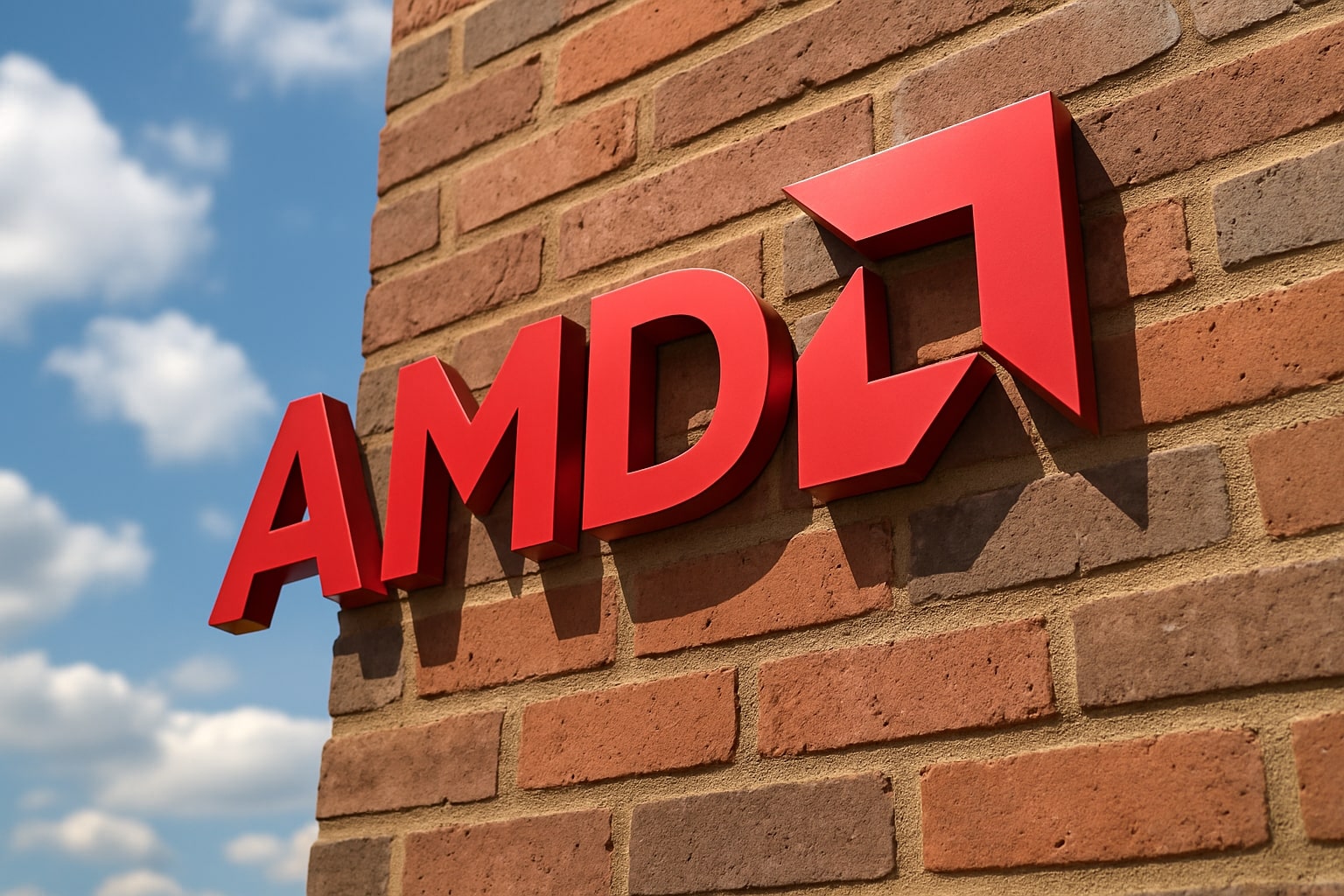
NASDAQ:AMD Stock Price Forecast – Can AMD Recover From $151 as AI Battle With NVIDIA Heats Up?
AMD’s $245B valuation, 90x P/E, insider moves, and new MI400 GPU roadmap set the stage for high volatility and potential upside toward $199 | That's TradingNEWS
NASDAQ:AMD Stock Analysis – AI Competition, Earnings Strain, and Valuation Risks at $151
AMD Faces Market Reversal After Summer Rally
Advanced Micro Devices (NASDAQ:AMD) closed at $151.14, dropping 6.58% in the last session and losing nearly 20% in under a month after a strong rally that had pushed shares close to their 52-week high of $186.65. The stock now trades only slightly above its 50-day moving average of $161.10 and well above its 200-day average of $125.68, highlighting the volatility that has gripped semiconductor equities. With a market capitalization of $245.3 billion and a sky-high trailing P/E ratio of 90.5, investor confidence rests entirely on AMD’s ability to capture a bigger share of the AI accelerator market currently dominated by NVIDIA.
Financials Highlight Valuation Stretch
AMD reported $29.6 billion in trailing twelve-month revenue with net income of $2.73 billion and EPS of $1.66. Quarterly revenue expanded 31.7% year-over-year, while quarterly earnings growth jumped 229.1%, but margins remain thin. Profit margin sits at 9.57%, return on equity at just 4.7%, and return on assets a modest 2.19%. Cash reserves reached $5.87 billion, balanced against $3.89 billion in debt, with a debt-to-equity ratio of only 6.5%, showing a conservative balance sheet. Despite strong fundamentals, the price-to-sales multiple of 8.33 and enterprise value/EBITDA at 43.45 suggest an overheated valuation that demands flawless execution in AI. Analyst targets range from $125 on the low end to $230 at the high end, with a median estimate of $185.55, implying nearly 23% upside from current levels.
Competition From NVIDIA and Broadcom Intensifies
NVIDIA’s 94% share of the GPU market puts AMD at a structural disadvantage, with CUDA software dominance acting as an ecosystem moat. AMD’s ROCm platform struggles for adoption despite hardware parity with NVIDIA’s Blackwell architecture. NVIDIA’s data center revenue surged 56% YoY to $41 billion, while AMD’s data center revenue grew only 14% to $3.2 billion, underscoring the gap. Broadcom (NASDAQ:AVGO) has also emerged as a direct AI infrastructure competitor, reporting record AI-related revenues and gaining market share with hyperscalers. Adding to pressure, Alibaba’s in-house AI chip development threatens to fragment pricing in the GPU space further. AMD’s strength lies in its upcoming MI350 and MI400 GPU lines, with claims of 35x performance gains over prior models, but execution risk is high until meaningful orders flow through financials.
Read More
-
SCHG ETF Near $33 High As AI Giants Drive 19% 2025 Rally
01.01.2026 · TradingNEWS ArchiveStocks
-
XRP-USD Stuck At $1.87 As XRPI Near $10.57 And XRPR Around $14.98 Despite $1.16B ETF Wave
01.01.2026 · TradingNEWS ArchiveCrypto
-
Natural Gas Price Forecast - NG=F Slides Toward Key $3.57 Support As Ng=F Extends 33% Drop
01.01.2026 · TradingNEWS ArchiveCommodities
-
USD/JPY Price Forecast - Yen Near 156 As Fed Cuts Meet Boj Hawkish Turn
01.01.2026 · TradingNEWS ArchiveForex
Insider and Institutional Positioning
AMD’s insider transactions show minimal insider ownership at 0.5%, with institutions holding nearly 69.4% of shares outstanding. Short interest sits at 2.96% of float, representing 47.9 million shares shorted, reflecting skepticism from traders. Institutions such as Microsoft, Meta, and Oracle have publicly endorsed AMD’s Instinct series accelerators, a sign of strategic support to counter NVIDIA’s monopoly, but Wall Street is demanding proof in reported revenue before rewarding AMD further.
Leadership Changes Add Execution Risks
Investor anxiety deepened when AMD’s Corporate Vice President and Chief Accounting Officer, Philip Carter, resigned to take a CFO role elsewhere. While presented as amicable, leadership changes during heightened competition magnify concerns about execution. With AMD needing to prove delivery at hyperscale levels, financial leadership stability is critical, and the timing of this exit has raised eyebrows.
Broader Market Context and Macro Influence
Despite Fed Chair Powell’s dovish tone at Jackson Hole supporting equities, AMD failed to stabilize, a divergence that signals sector-specific headwinds rather than macro weakness. The semiconductor sector itself remains resilient, with peers like Micron (NASDAQ:MU) and Taiwan Semiconductor (NYSE:TSM) reporting strong gains. However, AMD’s beta of 1.92 makes it far more volatile than peers, meaning AI adoption timelines will determine its trajectory far more than broad equity flows.
AI Roadmap and Long-Term Growth Potential
Analysts forecast AMD’s revenue climbing 28% in 2025 to $33 billion and surpassing $40 billion in 2026, with EPS projected to reach $6.02 — a 54% increase year-over-year. If AMD achieves these numbers and trades at a Nasdaq-100 multiple of 33x earnings, the stock could justify a move toward $199, reclaiming highs. Execution hinges on large-scale adoption of the MI300X and MI400 accelerators, with Microsoft, Meta, and Oracle already committed to testing and integration. Delays in mass shipments, however, mean that substantial financial contributions will likely only appear in Q1–Q2 2026. Investors with patience may see AMD emerge as the only credible alternative to NVIDIA in AI, supported strategically by hyperscalers eager to diversify supply.


















